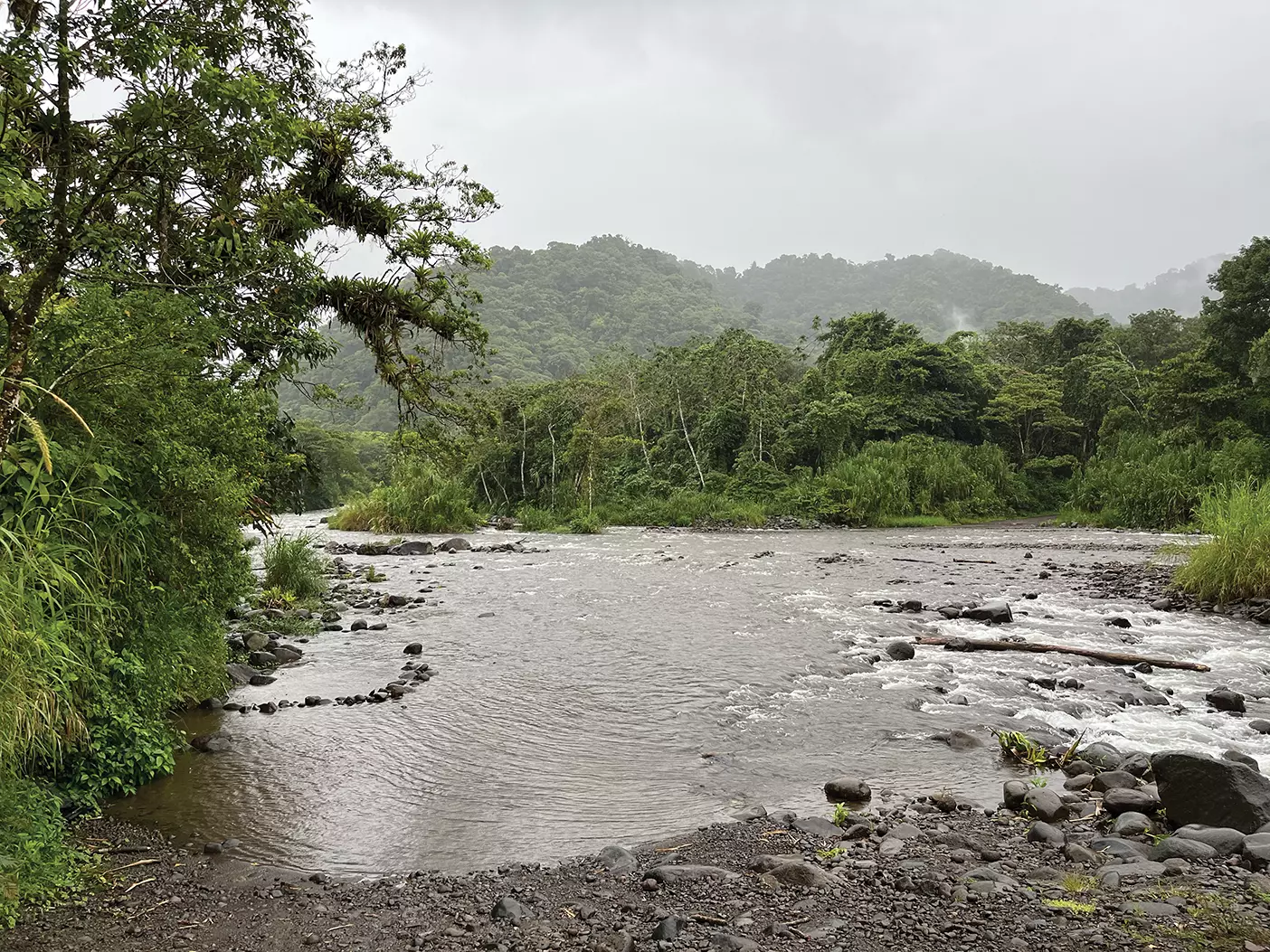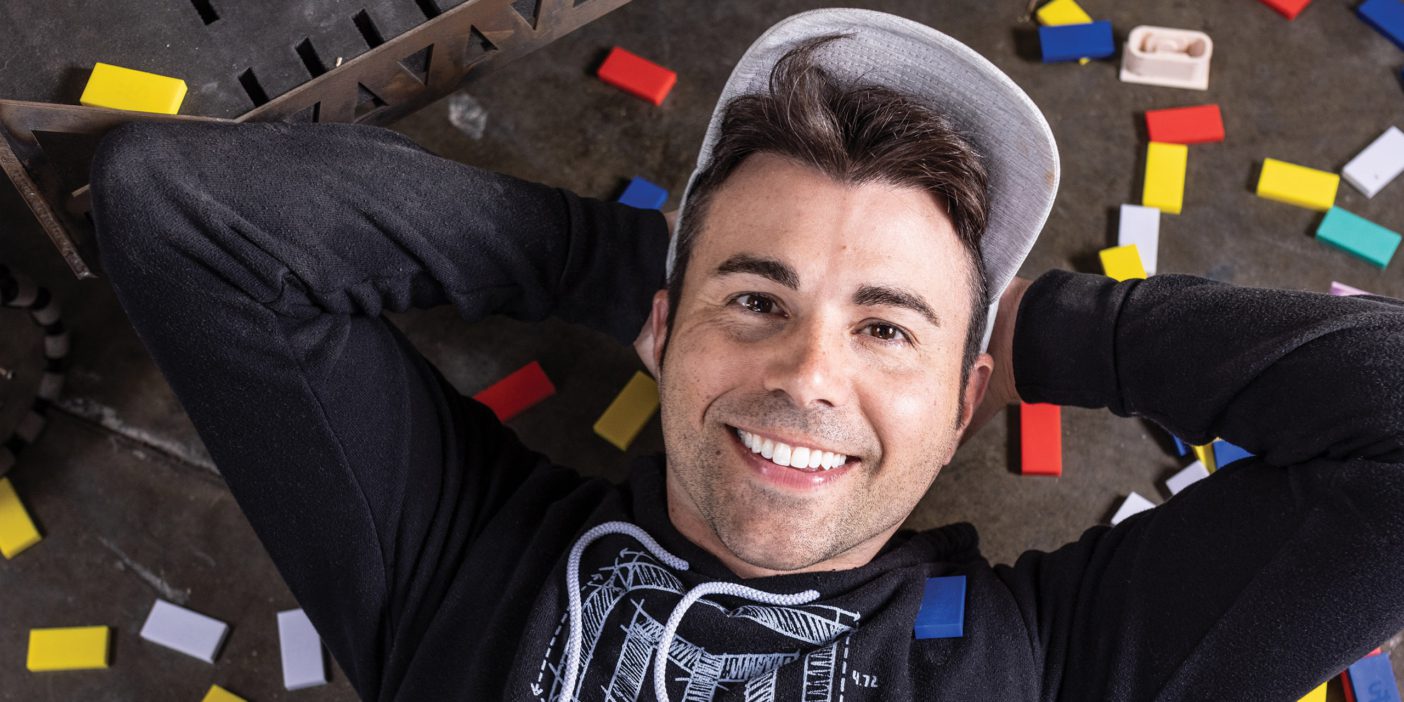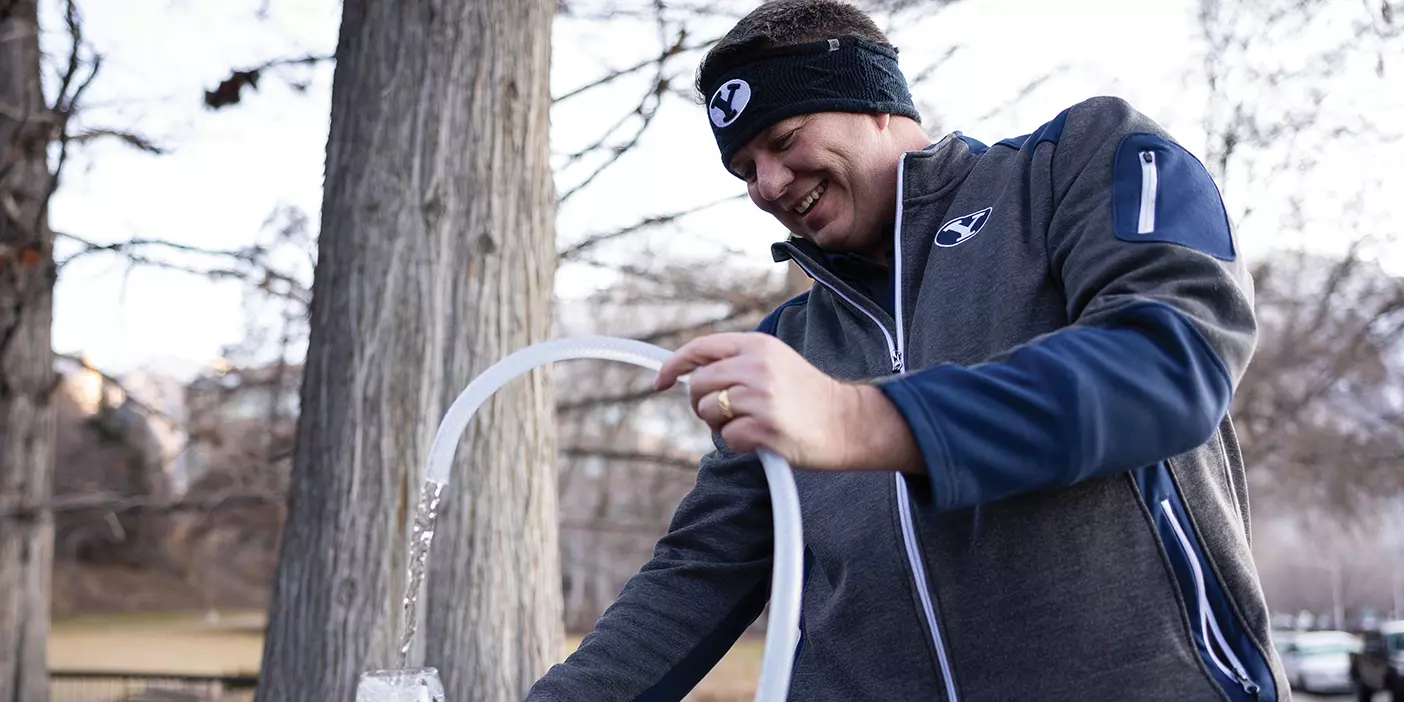In his research and his teaching, a BYU grad and professor explores big questions in biology and faith.
Sammy the slider turtle was frozen—solid. Las Vegas was unusually cold that winter, and young Jerry Johnson, a lover of reptiles, was devastated when he found his pet in a block of ice. He cried and prayed for Sammy to come back to life. To Jerry’s surprise, a hot bath revived the turtle. Jerry was grateful—and curious. How did that happen? It was a question that would lead him to later research cryo-proteins and chemistry in college.
Curiosity and questions have long animated Jerald B. Johnson (MS ’95), a BYU biologist and the curator of fishes at the Monte L. Bean Life Sciences Museum.
This first-generation college student’s initial step toward science was at Snow College, in Ephraim, Utah, where Johnson found a mentor in an old scientist, a real lover of the natural world who encouraged him to take vertebrate zoology because he knew Johnson loved lizards. Another was Paul Gardner, an anatomy teacher who taught Johnson to ask questions and seek answers. “We were dissecting cats,” recalls Johnson. “He said, ‘Jerry, come up with a question about cat anatomy that you think no one’s asked before.” Johnson’s question: how can cats move just the tip of their tail without moving the whole thing? His teacher had no idea, so he told Johnson to dissect the tail and figure it out.
“I can treat tough questions head-on and discuss them as a truth-seeking scientist and as a man of faith.”
Jerry Johnson
Curiosity gave Johnson traction while doing his PhD research in torrentially rainy Costa Rica. Getting to remote rivers in a rented Toyota Tercel—with tiny tires that kept going flat and an axle that eventually broke—was all he could manage. He was a poor, married-with-kids PhD student hauling nets around on his own dime to study little live-bearing fish for his dissertation. For many, the PhD pressure, the logistics of shipping live fish, and a month of slogging through Guanacaste-province mud might have provoked an existential crisis. Not only did Johnson not give up, but his questions have led to significant findings and taken him back to Costa Rica some 50 times over the years, and he’s taken scores of students with him.

Johnson’s questions stem from his scientific interest in knowing why things are the way they are. But he says they are also motivated by a desire to better understand what it means to be human, to be an embodied soul. “It turns out fish are good models for my questions,” he says. “As an evolutionary ecologist, I’m interested in the origin of reproductive strategies. Why do certain organisms lay eggs? Why do some hold their offspring internally? Why do humans have a placenta? Some fish have a pseudo-placenta. By understanding the evolution of certain traits, we get peeks into what it is to be human—what the natural man is.”
“The big theme for me, a biologist who believes in God,” says Johnson, “is that the bodies we occupy, like all organisms, have an evolutionary history. Every trait has a history. They all have led to how we are today.” Johnson says that natural-man traits like selfishness or responding in anger—“all of our behaviors and frailties that make up who we are”—can be seen as the products of evolution.
“Our humanness is a gift and a burden,” he says. “These mortal tabernacles of clay, occupied by our spirits, are the place where, with the Savior’s grace, we overcome the natural man and figure out how to live. I love that.”
Johnson’s approach to teaching and mentoring students is rooted in asking questions. “Conveying info is fun,” he says. “But I absolutely love it when students start asking questions in ways they’ve never thought of before. My favorite [method] of teaching, whether in the classroom, lab, or a Costa Rican river, is to look at something that everyone’s seen and just start asking questions.”

Seeking answers has led to countless adventures for Johnson and his students. On one trip to Costa Rica, a pack of wild javelinas chased Johnson’s whole team up onto some big rocks along a riverbank. On another, while netting fish in a big pool, monkeys overhead, a huge snake swam right through the middle of the team. “Everyone froze,” recalls Johnson. “There was no leaving. Luckily, in 30 seconds it was over.” And one time a giant banana spider dropped out of a tree into the water near Johnson and a fellow student, then skittered on the surface toward the nearest landing place, which happened to be his colleague’s head. The student survived, but the incident set Johnson’s curiosity in motion: “Why was the spider in that tree?” he wondered. “How does it land on water and get itself up? If I’m on water, I sink.”
Johnson sees BYU as an ideal setting for asking questions: “I can treat tough questions head-on and discuss them as a truth-seeking scientist and as a man of faith. It hurts to get a letter from a student who has left the Church because he or she can’t reconcile faith and science,” he says. “That’s what we can and should do at BYU with the nurture of the Spirit.”
Johnson’s role is less about answering questions himself and more about “helping students come up with questions that they can find a way to answer,” he says. “The exciting thing is to live in a world where you not only have great questions, but you have the tools and ability to answer them.”












